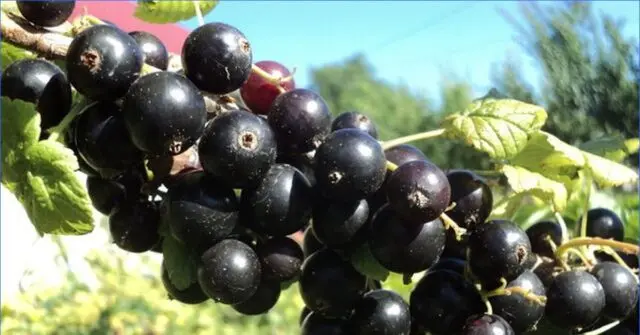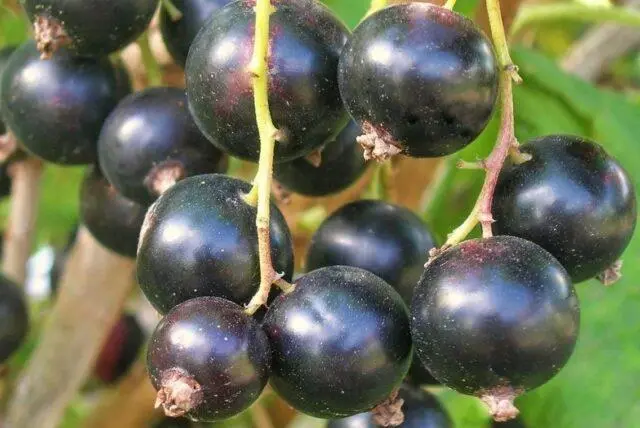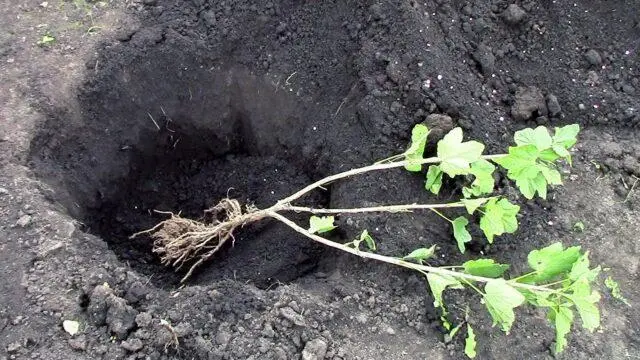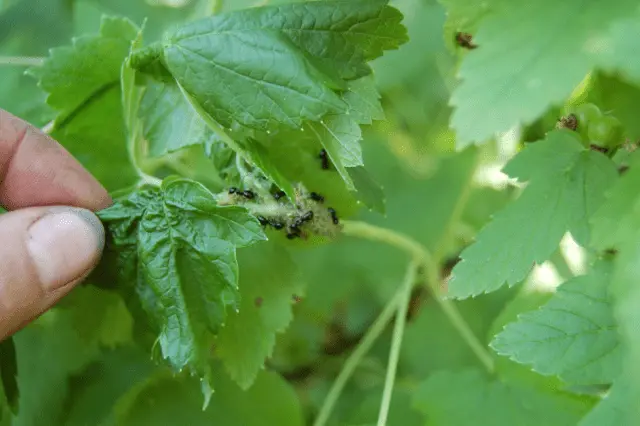Contents
Currant Sinegorye is a novelty in the market of fruit crops. The variety was bred in the Southern Urals, therefore it is perfectly adapted to a number of adverse factors. Sinegorye currant is self-fertile, attracts with large berries with a harmonious taste, gives a good harvest.
History of breeding
Blackcurrant Sinegorye was bred quite recently – in 2018. Breeding work was carried out by specialists from the Scientific and Production Association “Gardens of Our Country” (Chelyabinsk region). The novelty was obtained from the Oriana blackcurrant, a complex hybrid that came from four different varieties at once, including Pamyati Vavilov and Zagadka, listed in the State Register of the Federation. The name Sinegorye was given in honor of the ridge, which is part of the Ural Mountains.
We received a novelty from the reseeding of Oriana seedlings. For them, they purposefully chose the most unfavorable place, deliberately infecting the site with powdery mildew, anthracnose. Bushes were planted in the neighborhood, which were badly damaged by a bud mite. Such aggressive conditions were created specifically to obtain high resistance to them. The strongest seedlings were used and among them the most fruitful and large-fruited ones were already selected.
Description of blackcurrant Sinegorye with a photo
Currant Sinegorye comes from the Oriana variety, therefore it is in many ways similar to it. This also applies to appearance.
Bush
Currant Sinegorye is a medium-sized variety. Spreading bushes reach a height of 1-1,2 m. The shoots look like this:
- straight shape;
- thickness is moderate;
- grayish-ash color;
- the size of the leaves is medium, the shape is three-lobed, the color is rich emerald;
- there are sparse teeth on the edges of the plates, the front part is smooth, and the wrong side has large veins;
- flowers are medium in size, yellowish in color.
Flowers bloom in mid-May. Spring frosts by this time the buds are usually no longer afraid.
Berries
Currant Sinegorye belongs to large-fruited varieties. The mass of its berries is 3,5-4 g. They look like this:
- correct spherical shape;
- the skin is thin, but strong;
- shiny surface;
- color black;
- dry separation;
- pronounced aroma;
- juicy flesh, greenish color.
The brush can contain up to ten fruits. They are located quite freely, which facilitates harvesting.

Berries of black currant Sinegorye when fully ripe are quite one-dimensional – this simplifies harvesting, improves presentation
Characteristic of the variety
To obtain a new variety, the best and most resistant to various negative factors seedlings were selected. This largely determined the characteristics of the Sinegorye currant.
Palatability
Sinegorye blackcurrant fruits are distinguished by a balanced sweet and sour taste. They contain more than 8% sugars, and 3,3 times less acids. Berries are not only tasty, but also healthy. There are about 100 mg of ascorbic acid per 200 g.
Terms of maturation
Currant Sinegorye belongs to the middle-late varieties. The crop is harvested in the first decade of August. When the summer is warm, ripening can begin earlier by 1,5-2 weeks. The variety is self-fertile, therefore it does not require pollinators.
Productivity
Currant Sinegorye begins to bear fruit in the third year of life. Up to 5-6 kg of berries are removed from the bush at the age of 3-4 years. They ripen together. The culture reaches its maximum productivity in 1-2 years.
Frost resistance
Black currant Sinegorye was bred in the Southern Urals. The harsh conditions of the region provided this variety with good winter hardiness. The culture withstands frosts down to -40 ° C. If the temperature in winter does not exceed this limit, then shelter is not required for the bushes.
The variety tolerates a lack of moisture well. It is not prone to fruit shedding, however, the berries become smaller under such conditions.
Disease resistance
When breeding Sinegorye currants, the seedlings were “given” harsh conditions and only the strongest specimens were selected. This provided the variety with high resistance at the genetic level to a number of diseases and pests:
- powdery mildew;
- wet rot;
- spotting;
- kidney tick.
Advantages and disadvantages
Sinegorye currant berries are transportable due to their strong skin and dry separation. In a cool place (+5-7 °C) the shelf life is up to two weeks.

Sinegorye currant fruits are good fresh, but their purpose is universal
Pros:
- large fruits;
- one-dimensional berries;
- high yield;
- no tendency to crumble;
- self-fertility;
- good taste;
- good transportability;
- universal purpose;
- high frost resistance;
- immunity to a number of diseases, pests;
- resistance to adverse climatic conditions;
- berries gel well.
Cons:
- crushing fruits with a lack of moisture;
- congestion of branches with ripe berries – without supports, they can break.
Rules of landing
For Sinegorye currants, an open sunny area is allocated, which melting snow does not flood in spring. Fertility and breathability are important for the soil. The reaction is better neutral, slightly alkaline is acceptable. If the soil is acidic, dolomite flour is added in two weeks – 1 kg per 3 m².
The landing algorithm is simple:
- Prepare planting pits with a diameter of 0,5 m at intervals of 1,2-1,5 m.
- Organize drainage – 2-3 cm of rubble.
- To the fertile soil, add compost (you can rotted manure) and river sand in ½ parts, complex granular fertilizer (volume according to the instructions), 1 liter of wood ash.
- Spill the hole with water.
- Set the seedling at an angle of 45 °, straightening the roots.
- Cover with soil, gradually compacting. The seedling is buried 5-9 cm lower than it grew in the nursery.
- Liberally pour.
- Trim, leaving 25 cm in height.

Sinegorye currant can be planted in April-May or September, in summer only with a closed root system
Features of care
In summer, Sinegorye currants are watered once a week if the period is dry or fruiting has begun. A 10-liter bucket of water is spent on a bush. Moisturizing is required every 5-7 days.
When growing currant Sinegorye, fertilization is mandatory. Minerals are best used in the fall, making before digging. Nitrogen is applied only in the spring. During the season, it is recommended to use natural organic matter.
Pruning currant Sinegorye needs more sanitary. The thickening of the bushes is fraught with diseases, chopping of berries, and their shedding. Mostly branches bear fruit for 3-5 years, so the old ones need to be cut out. Leave 18-20 shoots:
- three pieces at the age of 1-2 years;
- 4 – 3 and 5 years;
- 2 – 6-7 years.
All sections are immediately treated with garden pitch. To prevent the branches from falling under the weight of the crop, it is necessary to install props in advance.
As preparation for winter, only autumn digging with fertilization and mulching is required. A layer of 15 cm is enough.
Of the currant pests, Sinegorye is more annoyed by aphids. It is attracted mainly by young shoots. To combat the pest, drugs are used:
- Biotlin;
- Fitoverm;
- Decis Profi;
- Confidor;
- Karbofos;
- Tanrek;
- Aktara.

To prevent aphids, it is important to deal with ants that attract them.
Conclusion
Smorodina Sinegorye is a large-fruited productive variety with high resistance to a number of diseases, bud mites and adverse climatic conditions. When growing, be sure to organize props. Berries are suitable for transportation.









